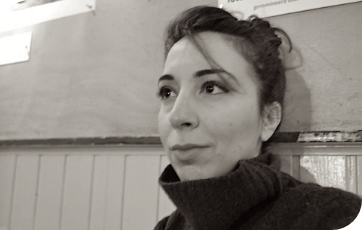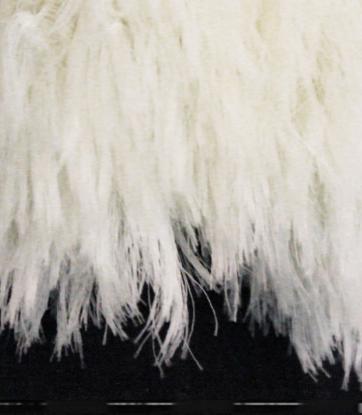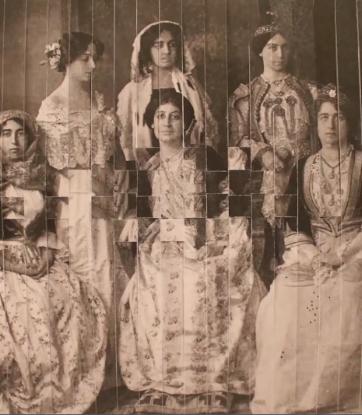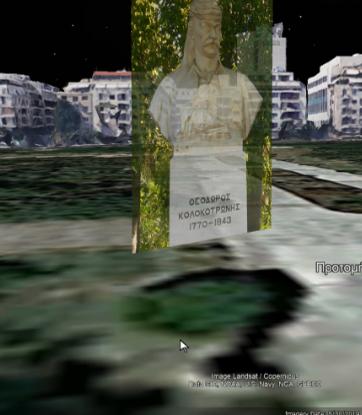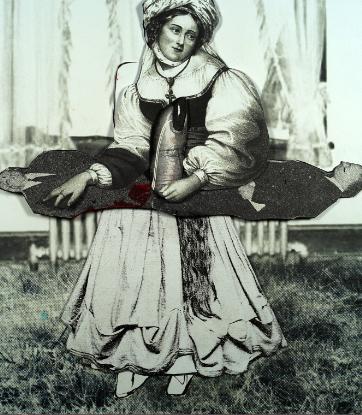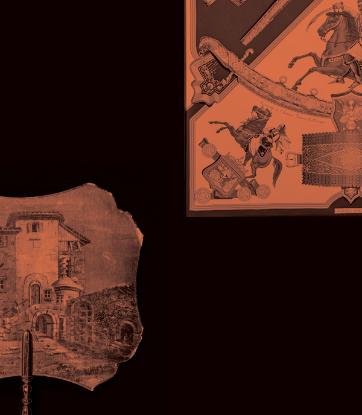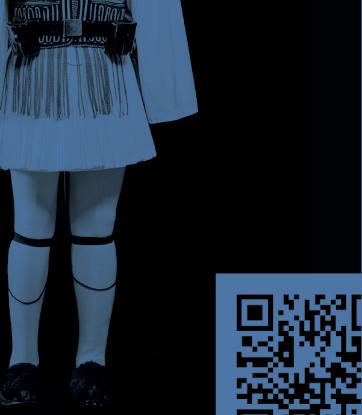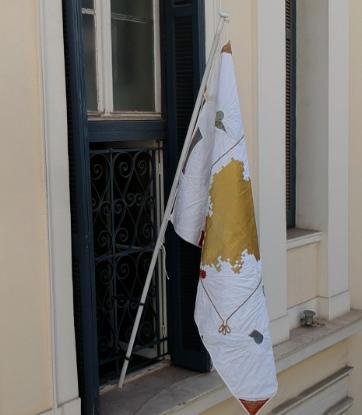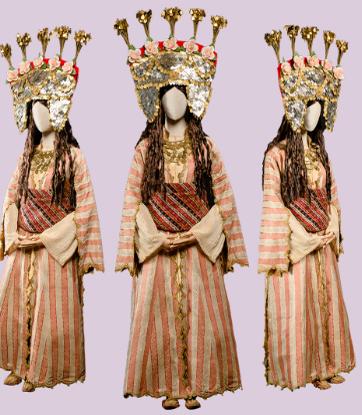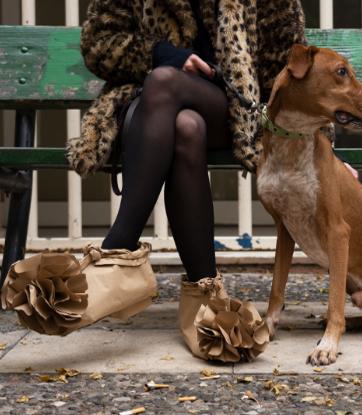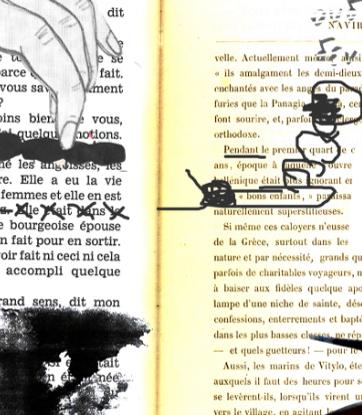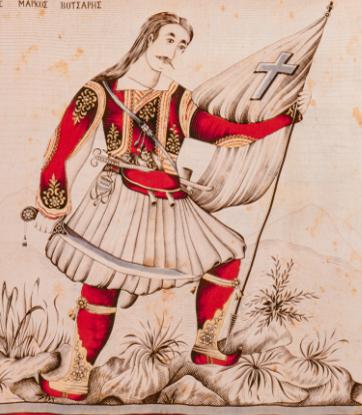The Zalongo Dance. Words have their own history.
Marilena Aligizaki’s documentary sets out to discover the word-history of “Zalongo Dance”, the term that has come to describe the deliberate leap of the women of Souli into the river Acheron.
The historical framework for this event and for the birth of this expression was the fight of the inhabitants of the eleven villages that formed the so-called “Souliot Confederation” against Ali Pasha, around 1803. Although these struggles predate 1821, they are considered the precursors of the Greek Independence War.
The Souliot women’s act of throwing themselves and their children off the cliff of Zalongo is described as an act of suicide by eyewitnesses, travelers who visited Souli, like J. Bartholdy1 and W.M. Leake, and historians, starting with Christoforos Perraivos2. A very vivid narration, that of the Turk eyewitness Efendi Suleiman Aga, officer in the service of Ali Pasha, was immortalised in the writings of Ibrahim Manzour3, a French mercenary who converted to Islam.
In exploring anew the “history” of the term “Zalongo Dance” in more recent descriptive and encyclopaedic dictionaries, such as G. Babiniotis’ Dictionary of Modern Greek4 or the “Encyclopaedia of Greek Dance”5, one concludes that it is difficult to find all the different meanings this phrase took on over the years in a single entry. These meanings go as far as the current usage of this expression as a metaphor to imply total devastation.
From one entry to another, as well as from one article to another, the conceptualisation of the term “Zalongo Dance” twists and turns, even to the point of being registered as a “factitious” case of a dancing event, connected to the quasi-folk song “Eche geia kaimene kosme…”(“Farewell poor world…”).
In the dancing lexicon of the Lykeion ton Ellinidon, the Zalongo Dance is a kind of syrtos dance, which appears for the first time at the “Anthestiria” the organisation put on in 1911 at the Zappeion. The next year it is staged as a theatrical re-enactment at the International Congress of Orientalists, and then again in 1930 as a dancing event in honor of the women of Souli, during the centenary celebrations for the Greek Revolution, organized in the Athens Stadium by the Lykeion ton Ellinidon, until it is finally established in the Lykeion’s repertoire as a dancing act.
But over the years the Zalongo Dance has not stopped being glorified and immortalised in many ways in art and other domains, and being invoked as an ideal of female heroism.
- 1. “Some one hundred of these unfortunate had withdrawn north of Preveza to the Monastery of Zalongo, thinking that this spot, stronghold indeed, could offer them a new place for settlement. It was there that they were attacked and the massacre that followed was apalling. Thirty nine women leaped off the cliffs along with their children, some of them still breastfeeding." (Jakob Ludwig Salomon Bartholdy, «Bruchstücke zur nähern Kenntniss des heutigen Griechenlands, gesammelt auf einer Reise…im Jahre 1803-1804.” ErsterTheil. Mitneunillum. Kupfern (von Gropius) mit Vignetten und Musikbeilagen. Berlin, 1805)
- 2. “But up to sixty of the women, on the second day, having witnessed these brutal events, gathered on top of a rocky precipice and decided that they would rather throw themselves to their deaths from the cliff than surrender into Turkish slavery. Whereupon, having grabbed in their own hands the innocent and tender babies, they flung them over the precipice. Then the mothers held hands and started dancing, and, still dancing, willingly jumped off the cliff, one after the other. Some of them, however, did not die, because they fell onto their children or their comrades, whose bodies were impaled on the sharp rocks of the cliffs.” (Christophoros Perrevos, "Tales of Souli and Parga", 2nd ed., Athens, 1857?)
- 3. “[…] they held hands and began a dance, whose steps were driven by an unusual heroism and whose rhythm was punctuated by the anguish of death…As each chorus ends, the women emit a drawn-out, high-pitched cry, whose echo fades in the depths of a terrifying chasm, in which they throw themselves together with all their children” (Samson Cerfberr (Ibrahim Mansur Effendi), «Mémoires sur la Grèce et l’ Albanie Pendant le Gouvernement d’ Ali-Pacha», Paris, J.N. Barba, 1828;)
- 4. Zalongo (n.): mountain of Epirus. Exp. Zalongo Dance (n.) heroic act of self-sacrifice in December 1803 by women of Souli, who chose to fall from the cliff of Zalongo along with their children rather than be captured by the Turks; according to tradition, this was done as a ritual act in the form of a circle dance. (G. Babiniotis, Dictionary of Modern Greek, 1998)
- 5. Zalongo (dance of - ): “Event where, according to one tradition, women from Souli fell from a cliff while dancing, in order to escape capture by the Turks." Encyclopaedia of Greek Dance (Athens 1995)
So, choosing the peaks of Zalongo as a point of departure, the visual artist, as a modern-day flâneur, takes to a sensory in situ wandering, with the intention of reaching a close-up “reading” of the elements that compose the history of the “Zalongo Dance”.
At the same time, she invites the spectator to travel the field in a spirit of research. The drone is chosen on purpose, not to offer a tour of the geomorphology of the natural landscape of Zalongo, but as a modern “vision” machine that watches from “a distance” and attempts “to land” in time and space, while daring at the same time to reflectively approach the historical past.
An “invented” human figure is added to the visual experience, wandering around the scene as a creature of the imagination. It even borrows the costume often used to represent Souli on stage, in order to create a “living” replica of what we imagine or at least of what has prevailed as a familiar local “identity”. The frequent reflections flicker between the mirror image and its shadow, thus highlighting the importance of “images” as a reflection of “reality”. And using the dissolve effect where scenes of a “chorus” of women slowly dissolve and/or infiltrate other shots, metaphorically creates a chain of meanings around the “myth” of the dance and the act of dancing.
And, as the artist slides into the realm of the fantastic, she gives her work the qualities of a documentary through a spoken intervention by Anthropology of Dance Professor Rena Loutzaki, who researches the dance element of the Zalongo Dance, but also through showing representations of the event in different media. Just like the “Zalongo Dance”, which moves between history and myth.
In the end…Did it (the “Zalongo Dance”) happen? Did it not happen? …Either way, some women did dance it.
Tania Veliskou studied History and Archaeology at the Aristotle University of Thessaloniki, receiving scholarships from the Tsagada Legacy Fund for her performance in the programmes of Folklore and Social Anthropology. With a scholarship from the “Maria Heimariou” Foundation, she undertook postgraduate specialisation studies in Museology at the Department of Museum Studies of the University of Leicester, U.K.
She has participated in research programmes at the Aristotle University of Thessaloniki on the documentation and management of costume collections, as well as in folklore research in situ in Northern Greece. She works as a curator at the Museum of the History of the Greek Costume of Lykeion ton Ellinidon, primarily on museological research, museography design and the curation of thematic exhibitions. She is a member of the Hellenic Costume Society.
Marilena Aligizaki
Marilena Aligizaki
Mary Thivaiou
George Makris
Alexandros Salis
Elektra Stampoulou
Marilena Aligizaki
Penny Saccopoulou - Valtazanou
Rena Loutzaki
Tania Veliskou
Benaki Museum, Municipality of Lesvos and Theophilos Museum, Vareia, Lesvos as well as Victoria Kontodima and Vassilis Salis
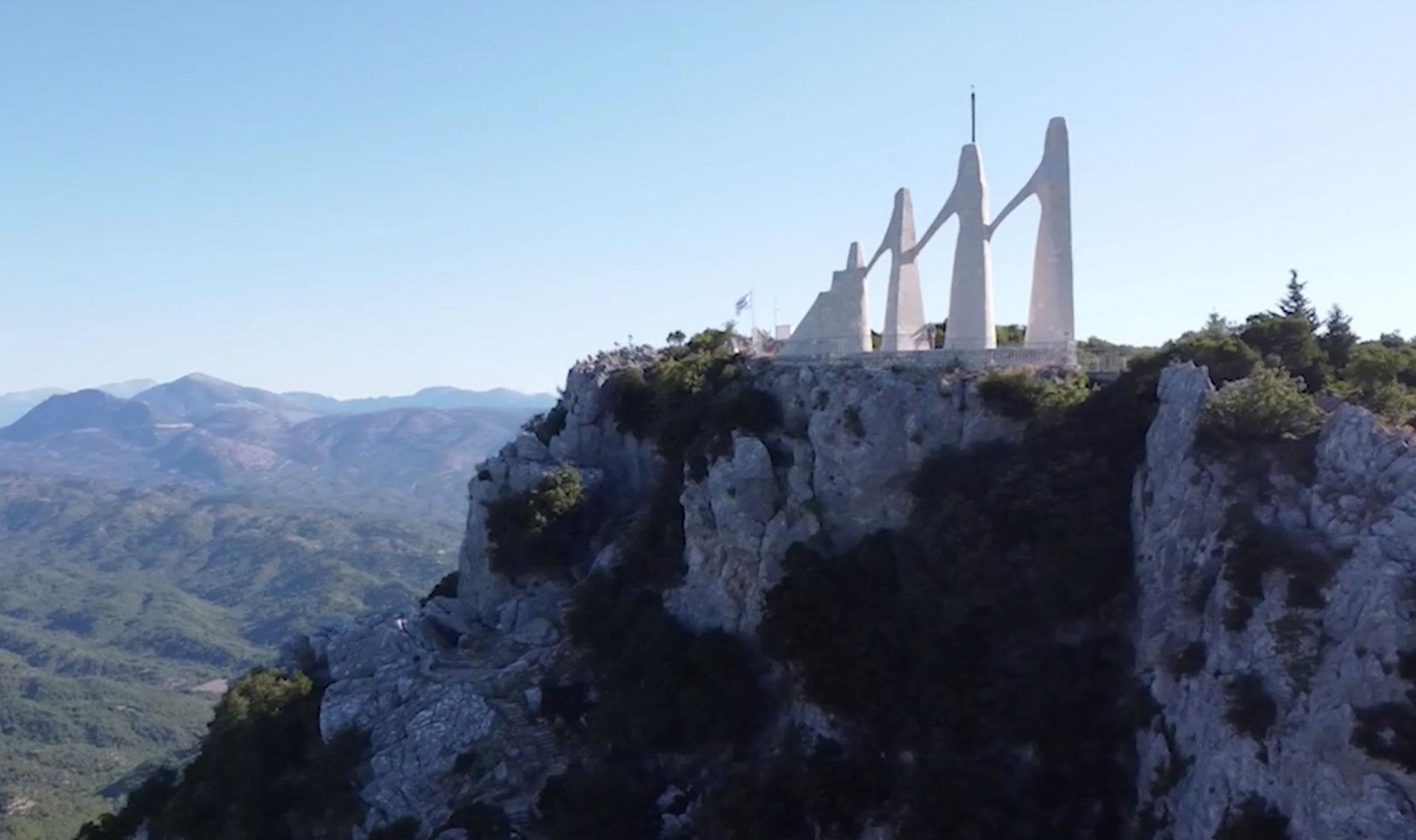
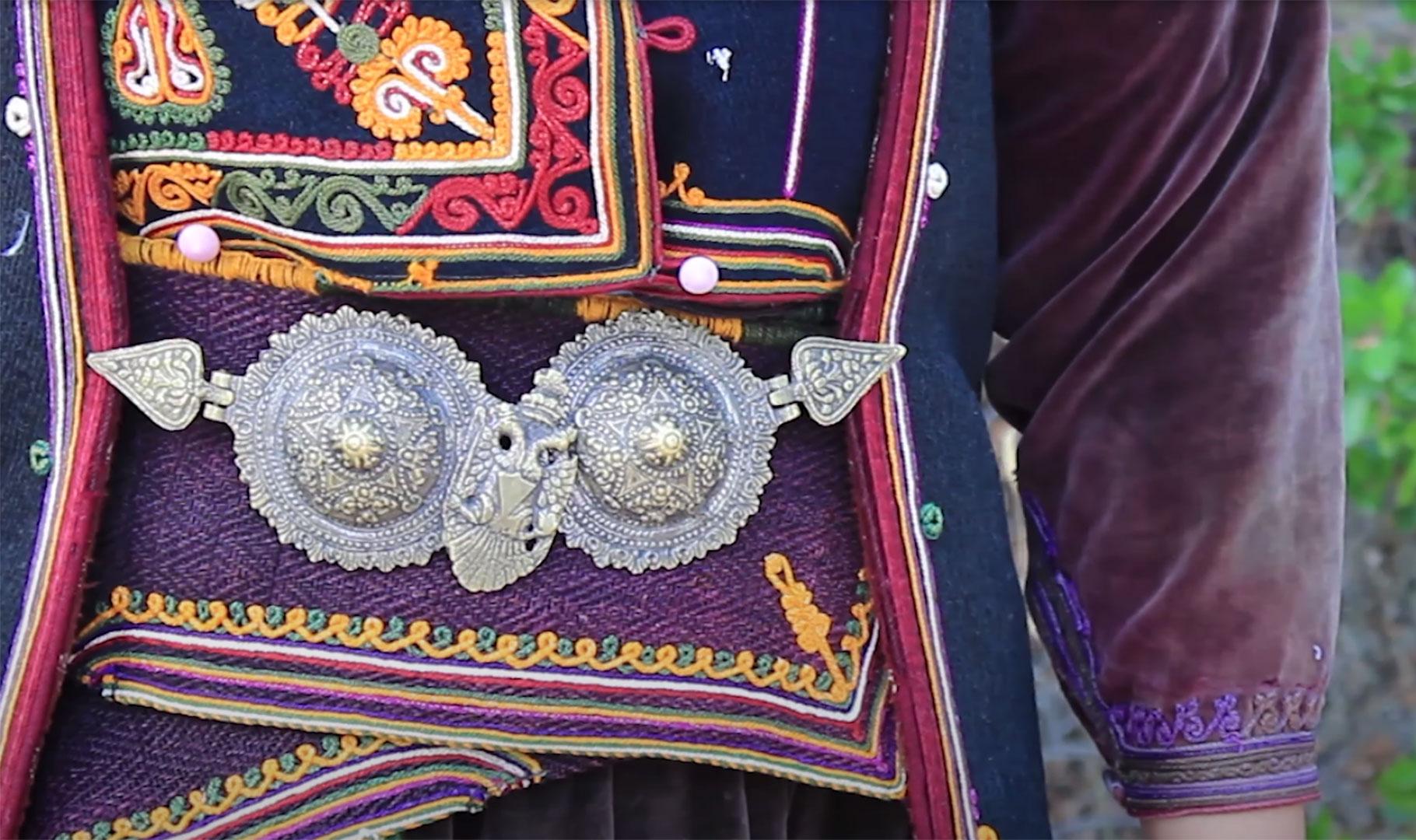
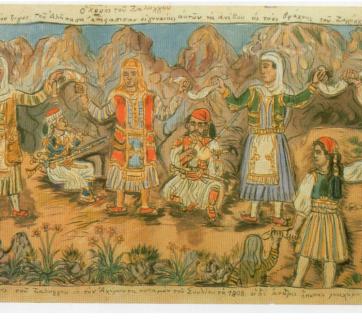
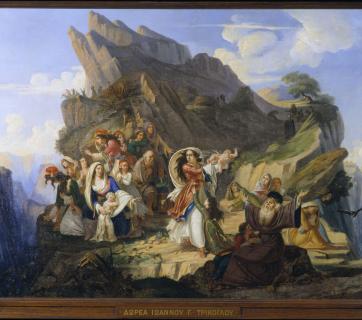
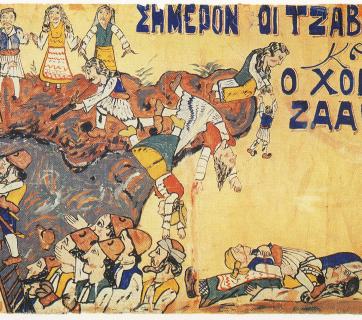
![“The dance of Zalongo”. Cover from an issue of the “Classics Illustrated” series. [M. Pehlivanidi – ATLANTIS]. No 1263 Private collection](/sites/default/files/styles/gallery_thumb/public/2021-01/4_Aligizaki_%CE%9A%CE%BB%CE%B1%CF%83%CF%83%CE%B9%CE%BA%CE%B1%CC%81-%CE%95%CE%B9%CE%BA%CE%BF%CE%BD%CE%BF%CE%B3%CF%81%CE%B1%CF%86%CE%B7%CE%BC%CE%B5%CC%81%CE%BD%CE%B1-zaloggos.jpg?h=cb69c7db&itok=Szpuaznm)
